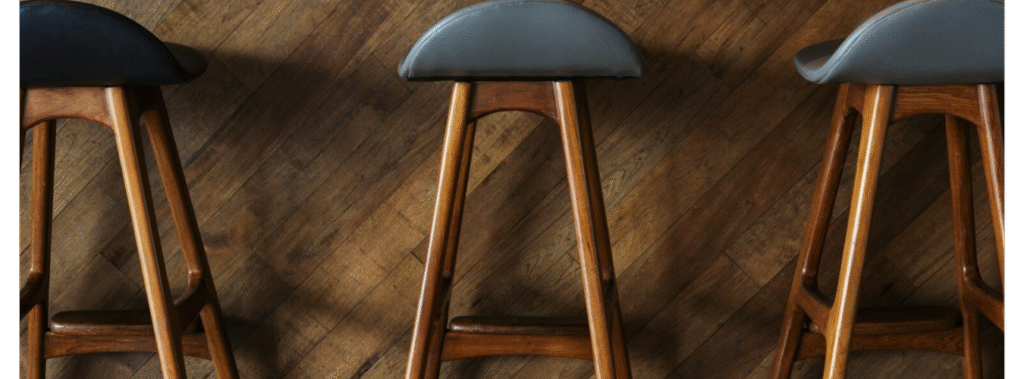A chair stand that starts to wobble might seem like a small issue at first, but ignoring it can lead to bigger problems over time. The wobble can put extra stress on joints and frames, eventually turning into cracks, breaks, or even a completely unusable chair. Whether it’s a piece you love or just one that gets a lot of use, keeping it stable helps protect both the chair and the space around it.
Wobbly furniture can also be frustrating to live with. One minute you’re sitting down to relax or work, the next you’re shifting your weight trying to keep balance. Fixing a shaky chair stand not only avoids long-term damage but also brings back that sense of comfort you had when the chair felt solid and dependable. Here’s how to spot the problem and get started on the right fix.
Identify The Cause Of The Wobble
The first step is figuring out what’s causing the wobble. It’s not always just a loose screw or worn leg. Wobbling can come from different structural issues, and identifying exactly where the weakness lies will give you a better shot at fixing it correctly the first time.
Here are some common reasons chair stands become unstable:
– Legs are uneven or worn down from extended use on hard flooring
– Screws or bolts have come loose or stripped completely
– Joints in the frame have loosened from repeated pressure or age
– Wood has cracked or warped due to humidity or changes in temperature
– Previous repair attempts might have been done poorly or with mismatched parts
To figure out if it’s a minor or major issue, put the chair on an even surface. Gently press down on the corners and feel for movement. If it shifts or creaks, check the leg connections by hand to see if any screws are loose or rotating freely. Also, examine the bottom of each leg to see if one is shorter, chipped, or wobbling unevenly on the floor.
If it’s a chair you picked up from a secondhand shop or inherited from a family member, there might be wear that’s been building up for years. A small tilt or gap in the joints can get worse the more the chair is used. Fixing the exact cause will make a big difference in how long the repair holds up.
Tools And Materials Needed
To correct the wobble, you’ll need a few basic items. It should be easy to find most of these supplies at a local hardware store. Try to use quality tools since they can give you a better grip and avoid slipping or damaging the wood.
Here’s a quick list of tools and materials that tend to come in handy:
– Screwdriver (flathead and Phillips)
– Wood glue
– Clamps
– Rubber mallet
– Wood filler (if cracks are present)
– Sandpaper (medium to fine grit)
– Level or square tool
– Replacement screws or wood dowels
It helps to set everything out before starting the repair so you’re not scrambling to find pieces when you’re halfway through fixing the stand. If you’re planning to do more than one chair down the line, investing in a basic repair kit can save time and trouble later.
Depending on the type of chair, you might need a small wrench or Allen key instead of a screwdriver. Folding or vintage-style chairs sometimes have custom parts, so it’s worth checking what you’re working with before assuming standard tools will do the job.
Step-By-Step Repair Guide
Once you’ve figured out the problem and gathered your tools, it’s time to actually fix the chair stand. Take your time during each step. Hurried fixes usually lead to repeat problems later on.
Here’s a basic method for getting your chair stand solid again:
1. Flip the chair over and inspect each joint while it’s upside down. You’ll be able to see movement more clearly this way.
2. Tighten all screws and bolts you find. Even if just one leg is loose, it’s good to go around the full frame and snug everything up.
3. Apply wood glue to any joints that have slipped or feel loose. Use clamps to hold pieces firmly in position while the glue dries. Make sure the parts are aligned before you clamp them.
4. Use wood filler to patch small splits or form a tighter fit for dowels or joints that have loosened up. Let the filler cure completely, and then lightly sand it down to smooth it out.
5. Anchor uneven legs, if needed, using pads or shims once the structural repairs are done. If you’re confident the rest of the chair is level and square, this step can make a big difference in the way it sits on the floor.
If your chair has a decorative finish or special paint job, avoid taping off areas with strong adhesive. Instead, use painter’s tape designed for wood surfaces to protect those details while you’re working. One example we’ve come across involved a customer using string as a clamp on an old bentwood style chair after wood glue was poured into the joint. While the glue held for a while, the string didn’t apply enough even pressure, so the fix didn’t last. Clamps make all the difference here.
Allow everything to dry fully before flipping the chair upright and testing it out. Sit down gently and shift your weight slowly at first. If the chair feels solid and doesn’t creak or twist, you’re probably good to go. If you’re still getting movement, double-check the joints you thought were fixed.
When To Seek Professional Help
Even the most straightforward repair can surprise you. Sometimes it looks like the screw just needs tightening, but then you find out the wood around it is stripped. Or worse, the leg looks fine, but the whole frame’s out of square. At that point, it’s smarter to stop rather than push forward and risk damaging the piece more.
Here are a few signs that it might be time to contact someone experienced:
– The wood has cracked deep into the leg or split at a joint
– You already tried fixing it, but the chair stand keeps getting loose again
– You’re working with vintage or antique furniture and don’t want to risk the damage
– Tools or parts are missing, or the necessary replacement pieces aren’t easy to find
– The chair starts leaning or rocking even after a full repair attempt
It’s also worth thinking about the bigger picture. If you have multiple pieces that feel unstable, it may be more efficient and safer to call in help. That way, everything gets looked at together, and the repairs have a longer life without guesswork or trial and error.
Keep Your Furniture Sturdy And Stylish
Catching problems early and fixing them right makes your furniture last longer and feel better to use. A chair stand that’s strong and level can bring peace of mind, especially when it’s used every day. Once a piece starts wobbling, don’t ignore it. That little movement today can grow into something more expensive or frustrating down the line.
This is also a great time to give other items in your home a quick checkup. Chairs, side tables, and even cabinets can show early signs that they need support or attention. Taking a moment to address those things now can save more effort later on.
By keeping up with basic maintenance and checking furniture regularly, you’ll avoid surprises. A solid chair doesn’t just look better, it feels better and works the way it’s supposed to. Whether it’s an old favorite or a new addition, a well-balanced piece always brings more comfort into your space.
If a quick repair isn’t doing the trick or the damage seems deeper than expected, getting help from professionals can make all the difference. At The Crafty Renewal, we offer custom repair and restoration services designed to bring stability and style back to your favorite pieces. Discover how a tailored fix for your unique chair stand can improve both performance and appearance while preserving the piece you love.



